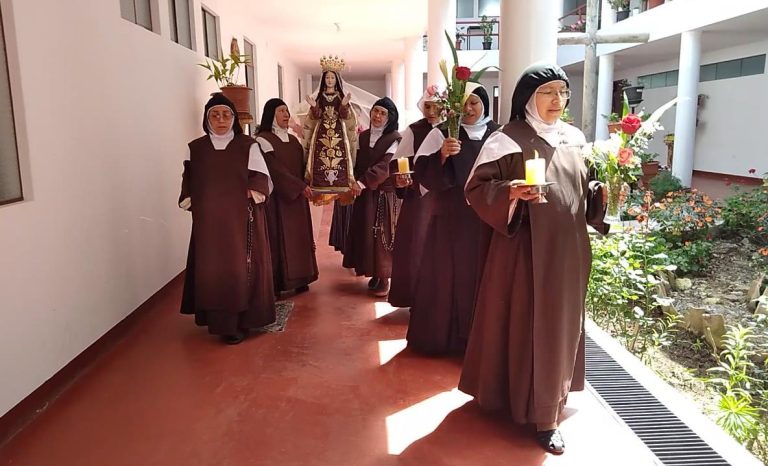PERU: Carmelite Sisters in Peru expanding convent to house booming vocations

Religious Sisters in Peru are to build an extra wing at their convent – which is celebrating its 10th anniversary – to meet the demand of new novitiates.
The Carmelite convent in Chachapoyas, capital city of the Amazonas, northwest Peru, lies in one of the poorer quarters on the outskirts of the city.
People visit the convent dedicated to the Infant Jesus of Prague and Saint Joseph to attend Mass or ask the Sisters to pray for them.
The convent was built in 2015 with help from Catholic charity Aid to the Church in Need (ACN) following an appeal supported by Humberto Tapia Díaz Bishop of Chachapoyas.
There are currently nine professed Sisters and three aspirants. Ten other young women are exploring their vocation but have not yet entered the convent.
But the building does not have the room to house them all, nor does it have adequate space for its own washroom, the Eucharistic bread-baking machinery and other workrooms.
The Sisters told ACN that much of the equipment is still stored in the corridors.
ACN has promised the Sisters that it will support their plans for an additional two-storey wing, and is set to appeal to its benefactors for the funds needed.
The Carmelites said the ground floor will house the novitiates who will explore their vocation in silence and prayer.
The upper floor will be used for workshop and activity rooms.
Peru, which is the third largest country in South America after Brazil and Argentina, currently has a lack of priests.
The country has approximately 3,000 priests for a population of over 30 million, meaning each priest serves an average of 10,000 people.
There are some areas, especially in the Andes and the Amazon region, where that number surpasses 15,000 faithful per priest.
The life of Carmelite nuns is centred around praying for the sanctification of priests and the salvation of souls.
Luis Vildoso, project coordinator for Latin America, said: “The monastery is located in an area of significant economic hardship, where even religious and priestly life faces serious challenges.
“Given these conditions, the construction of a novitiate is both timely and necessary, as it will provide a stable and structured environment for formation in a community that is growing despite limited resources.”
